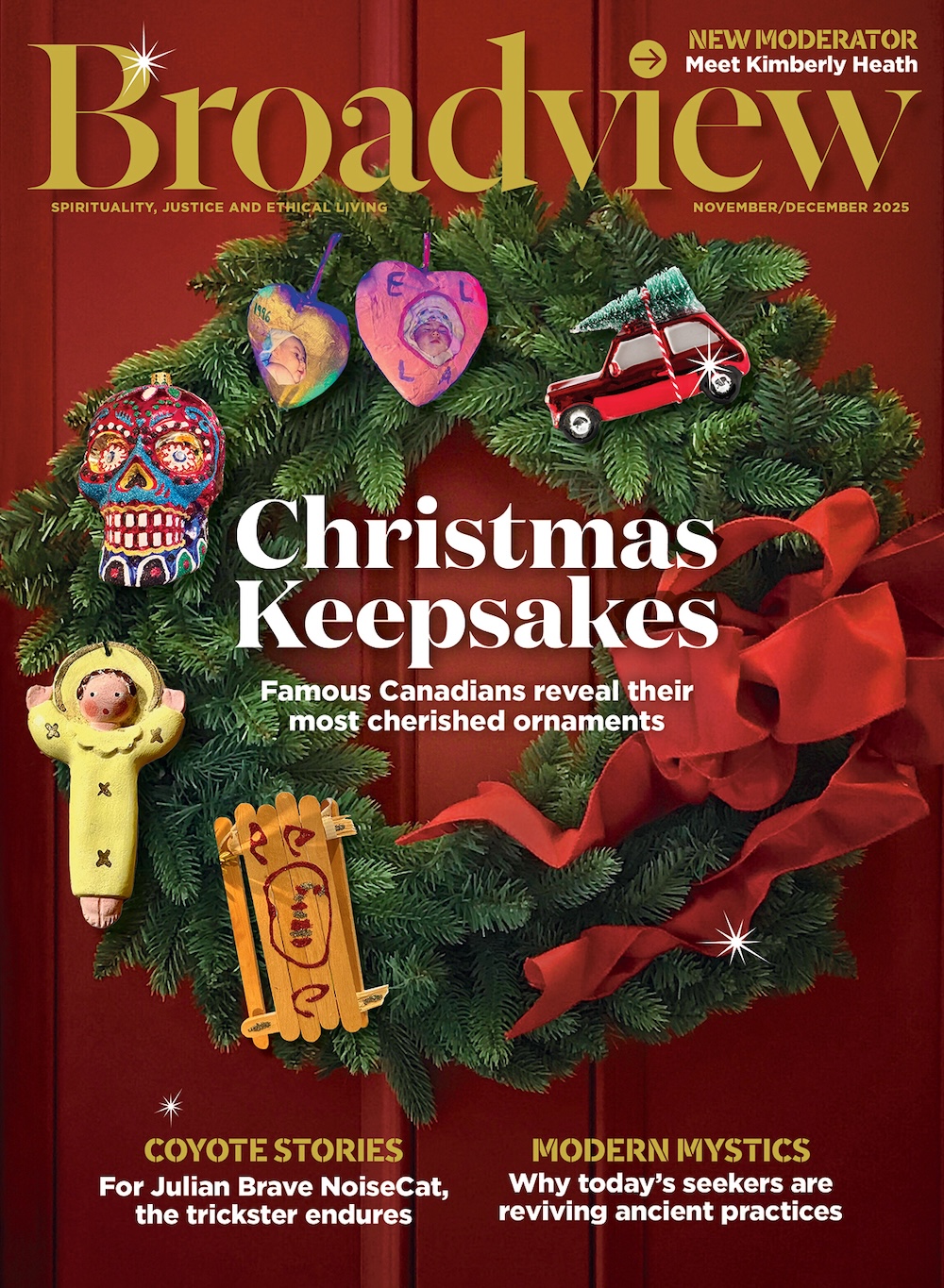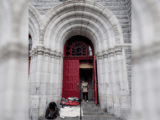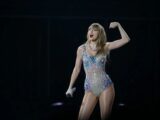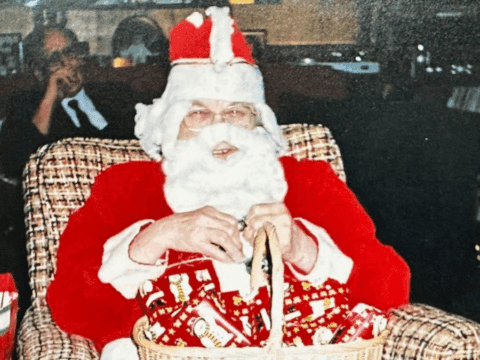In 2018, Liz Joyce posted a simple request on Facebook: was there a Black Santa she and her then-two-year-old Black son Atticus could visit in Toronto? “I desperately didn’t want him to start out his life feeling othered,” says Joyce. But no one had any leads.
The mall Santa they settled for was, as usual, white. When Atticus reluctantly perched on his knee, Santa didn’t smile. “He didn’t welcome my son,” Joyce remembers. “Atticus looked very, ‘Is this done yet? Why am I here?’” The photos show Atticus stone-faced. Would it have been different if Santa looked like him? Joyce wondered. “We just want to reclaim space in modern society,” she says. “We have a lot of self-esteem to recover as the ripples of slavery still reverberate. I want a range of opportunities for my child, and kids need that representation.”
You may unsubscribe from any of our newsletters at any time.
Joyce decided to ask a Black friend to play Santa. During this visit, Atticus warmed to him immediately, giving Santa a big smile after being deposited on his lap. “Big up, Atticus!” Santa cried in the familiar lilt of Atticus’s family members. At the end of the visit, the boy even gave Santa a hug. “They just want to see themselves,” Joyce says. In this photo, Atticus is snuggled in close with Santa. He looks happy.
After she posted about the visit on Facebook, many parents reached out to Joyce to say how wonderful it was to see a Black Santa for once. And the call for more is growing ever louder. The new HBO documentary Santa Camp, for example, follows the journey of several Santas-in-training, including Black dad Chris Kennedy, who was inspired to don the red suit after receiving a note filled with slurs and racist vitriol about his inflatable Black Santa in 2020. According to Kennedy, the New England Santa Society that runs Santa Camp has also been receiving “tons” of requests for Black Santas. In the United States, there’s a Find Black Santa app that covers dozens of states.
In Canada, some stores and organizations have been hosting Black Santas as well, including the Zimbabwe Cultural Society of Alberta in Edmonton and the Jamaican Canadian Cultural Association of B.C. in Surrey. In Toronto, Zahra Dhanani and her partner Mariko have been hosting events featuring Black Santa at their Old’s Cool General Store since 2016. “We’ve got to interrupt any time there is this assumption that any idea, person, icon, can only be white,” Dhanani says.
The couple started these events because they never saw themselves centred in the world when they were kids, which led to self-esteem issues. “These counter-culture moments allow light to get through for those of us who just didn’t have it growing up,” Dhanani says.
In 2016, a few dozen people showed up. By 2019, 400 visitors made the pilgrimage to Old’s Cool to see a Black Santa. Parents drove in all the way from Ajax, Whitby, Etobicoke and Mississauga, many of them crying tears of happiness, saying they wished they had a Black Santa as a child, she says.
Dhanani attributes the lack of Black Santas to internalized racism and white supremacy, along with a fear of change. This fear runs so deep, she says, that even some young Black children who come to their events have been scared of a Black Santa; one four-year-old girl was so upset Santa wasn’t white that she burst into tears and refused to sit on his lap. “It shows the level at which people have internalized the messages and visuals that they see everywhere,” Dhanani says. “What does it mean that a young Black girl can’t handle seeing this icon be Black?”
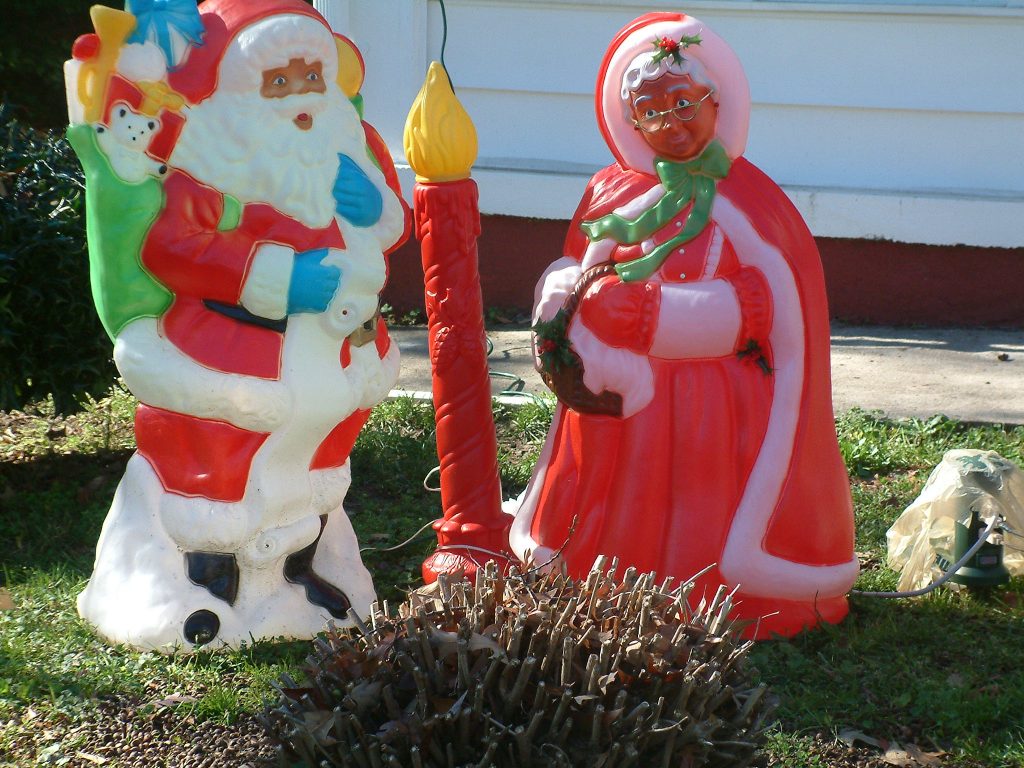
There’s definitely more progress to be made. Kennedy was still the only Black Santa at Santa Camp. Less than three per cent of all professional Santas in the U.S. identify as Black, according to the RealSantas booking agency, and out of the International Brotherhood of Real Bearded Santas’ 2,000+ members, fewer than 15 are BIPOC. Black Santas are scarce enough that when the Mall of America—the second-largest mall in the United States—hired their first Black Santa in 2016, Black families drove many hours to visit him. Mall staff found retired army veteran Larry Jefferson at a Santa convention… where he was the only Black Santa among 1,000 attendees. This holiday season, he will be joined, at last, by a second Black Santa, along with an Asian Santa.
More on Broadview:
- Black youth are helping United churches create a safe, diverse space
- This group creates a safe space for people of colour to grieve
- These three Black women are breaking barriers in ministry
Why do people cling so stubbornly to the idea that Santa must be white? Santa’s origins lie in the Mediterranean, via St. Nicholas, a Greek saint born around 280 C.E., and facial reconstruction by scientists posits that he had olive skin and brown eyes. Yet, over the centuries, he got whiter and whiter, his ruddiness codified in the 1822 poem “A Visit From St. Nicholas,” editorial cartoonist Thomas Nast’s popular 19th-century illustrations and 1920s Coca-Cola ads. Other brands soon replicated this imagery, and stores started hiring men who fit the whitewashed part to lure in holiday shoppers.
But we need a Santa for today. “Representation is improving in comics and superheroes and other pop culture,” says Joyce. “That means non-white Santas need to be normalized, too. It’s not just for the BIPOC families visiting the BIPOC Santas. It’s for the white people as well: they need to see that diversity.” Santa can evolve into a myriad of depictions: Black Santas, Asian Santas, Indigenous Santas, Latinx Santas (and, while we’re at it, more LGBTQ+ Santas and disabled Santas, too—and maybe even female Santas!).
White people, most of all, need to take up these efforts; this work is part of our duty to help to dismantle centuries of oppression. So, if you’re planning to attend a Santa session, ask the organizers if they have any BIPOC Santas working. If not, ask why; request a more inclusive roster next year and take your business elsewhere. If you’re hiring a Santa for your holiday party, seek out a non-white Santa. Spend your money on BIPOC-owned businesses like The Black Santa Company that produce holiday cards and wrapping paper featuring Black Santas. Or prioritize children’s books starring Black Santas. And if you see your Aunt Karen complaining that Santa is white and should stay white? Ask her why she’s so determined to make the big man white—racism is how you end up on Santa’s naughty list.
Located in the Greater Toronto Area and want to visit a Black Santa? Old’s Cool General Store is hosting their annual (outdoor) event featuring a Black Santa on Sunday, Dec. 11.
***
Briony Smith is a writer and editor in Toronto.



